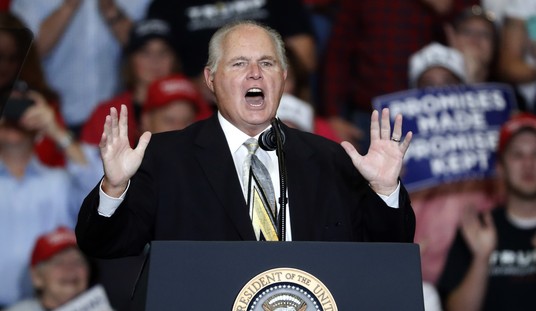Some people think it’s been all bad news for school choice this year. Well, it’s all bad news if you follow the standard procedure of only paying attention to the bad news. But last month, the movement scored a big win: Indiana enacted a $2.5 million choice program, the state’s first. And if you take a broader view, you’ll see there was other good news for school choice along with the bad in the 2009 legislative season.
This is important because we’ve seen some people occasionally seize on any piece of bad news as an excuse to declare vouchers politically dead. It’s an easy way to avoid taking a stand on the issue, and in some of the more egomaniacal cases, to show the world how amazingly cool and above it all you are.
We’re seeing more of this squishy triangulation tactic as the public has become increasingly disillusioned about the prospects of reforming the education monopoly from within. Five years ago, politicians and other opportunists who didn’t want to take heat would just parrot one of the various union lines. Now, those lines are increasingly discredited.
As a measure of just how discredited, consider how the unions have resorted much more frequently to lies and backstabbing this year than in the past. Just recently, the National Education Association lied to senators about the empirical evidence on the D.C. voucher program. Sen. Joe Lieberman, who has shown more courage in this fight than any five Republicans combined, responded by calling out Barack Obama and Education Secretary Arne Duncan, by name, on their promise to follow where the evidence led — and he showed that it leads to vouchers.
The opportunists, still afraid of the unions but knowing that they’ll look like tools if they keep parroting the union line, need a new excuse not to get behind the only really promising movement for school reform that’s out there. “It’ll never win politically” is the new “it drains money from public schools.”
The thing is, the new excuse is as groundless as the old.
There is no doubt that there has been bad news for the D.C. voucher program this year, where there is an ongoing effort to kill the program in spite of positive empirical results. Moreover, Democrats control all branches of Wisconsin government for the first time in decades, and legislators are moving to add ridiculous new restrictions to the Milwaukee voucher program — even though, as in D.C., the evidence shows the program works.
But the D.C. fight isn’t over, and it hasn’t turned out to be quite as easy as the unions expected. Too many Democrats have awakened — sometimes at the prompting of their disadvantaged constituents — to the fact that the unions enrich themselves by destroying children’s lives, and have come around on school choice. And every time the NEA or Sen. Dick Durbin get caught lying about vouchers, it gets that much more uncomfortable for responsible leaders to vote with them.
Even in Milwaukee, pushback against the more outrageous anti-voucher proposals has been stronger than anticipated. Hispanic parents sick of “bilingual” education that leaves their kids monolingual (in Spanish) have flocked to vouchers so their kids can learn English. The new regulations would impose bilingual education on them, and they’re not taking it lying down.
More important, however, is what’s happening elsewhere. Believe it or not, there is a world outside of D.C. And Milwaukee’s not the only city in it.
Recently, Indiana Governor Mitch Daniels — a longtime choice supporter — signed a hotly-contested budget bill that contained, among much else, a $2.5 million school choice program that will serve thousands of students. Union efforts to strip the program from the budget were fought off both during the regular legislative session and during the final budget negotiations. The new program provides what are known as “tax-credit scholarships” — just like vouchers except they’re administered by private organizations and funded through the tax code.
Arizona also enacted a new school choice program this year. After a long track record of legal wins for school choice in that state, the unions finally managed to induce judges to strike down two very small voucher programs. The state’s two much larger tax-credit scholarship programs were unaffected, since the state’s high court blessed that form of choice years ago. The legislature promptly responded to the new ruling by enacting a tax-credit scholarship program to provide the same school choice to the same students as the old voucher programs — but now under the protection of legal precedent.
Similar programs in Florida and Iowa were expanded this year. The two states have each expanded the scope of corporations who can donate to their tax-credit scholarships, which is expected to bring millions of new dollars into the programs to serve thousands more students in each state.
Georgia, which has become the nation’s leader in new school choice programs, began consideration of a universal voucher program. Every child in the state would be voucher-eligible. The bill has passed committee, and under the state’s multi-year process for legislation it will move forward for consideration by the full Senate next year.
New Jersey is also considering legislation that would create a new school choice program. And school choice legislation in Montana and Virginia got further than ever before this year, leaving the issue well positioned for future progress.
Does this mean 2009 is a great year for school choice? No, this is a more difficult year than most. Like every movement worth fighting for, school choice goes through its ups and downs.
But it’s important to measure both the bad and the good, and look at the whole picture. Clearly the movement is not dead just because two of the 24 school choice programs that exist nationwide are experiencing turbulence.
We had a really great year for school choice in 2006; five new programs were created. But then we had a tough year in 2007. A universal voucher program passed by the Utah legislature and signed by the governor was overruled by a union-backed referendum.
But you know what? That same year, Georgia enacted a large voucher program for special-needs students. And then in the next year, 2008, things were going well again — three new school choice programs were enacted, another large one in Georgia (with no restrictions on student eligibility) and two smaller ones in Louisiana.
The bottom line is that the D.C. and Milwaukee programs are in trouble because they’re legacy programs; they’re the old model of school choice, designed as charity programs that only serve the most disadvantaged. As a result, it’s hard to mobilize political support for them. The constituencies that benefit most are the least powerful.
Georgia, with its more broad-based programs, is pointing the way forward. School choice that serves all students, not just some, is where the movement is headed — precisely because it’s the only model where the political math adds up.
Our national future — in the form of our children’s education — is being demolished by a government monopoly that exists to serve the interests of a union gravy train. School choice has consistently worked, both to serve participants better and to improve all schools through competition.
The bottom line comes down to only two questions. Is our national future worth fighting for? And is there any other movement — is there anything else at all — that has shown any sign of producing the kind of positive educational results that are necessary to save it?









Join the conversation as a VIP Member